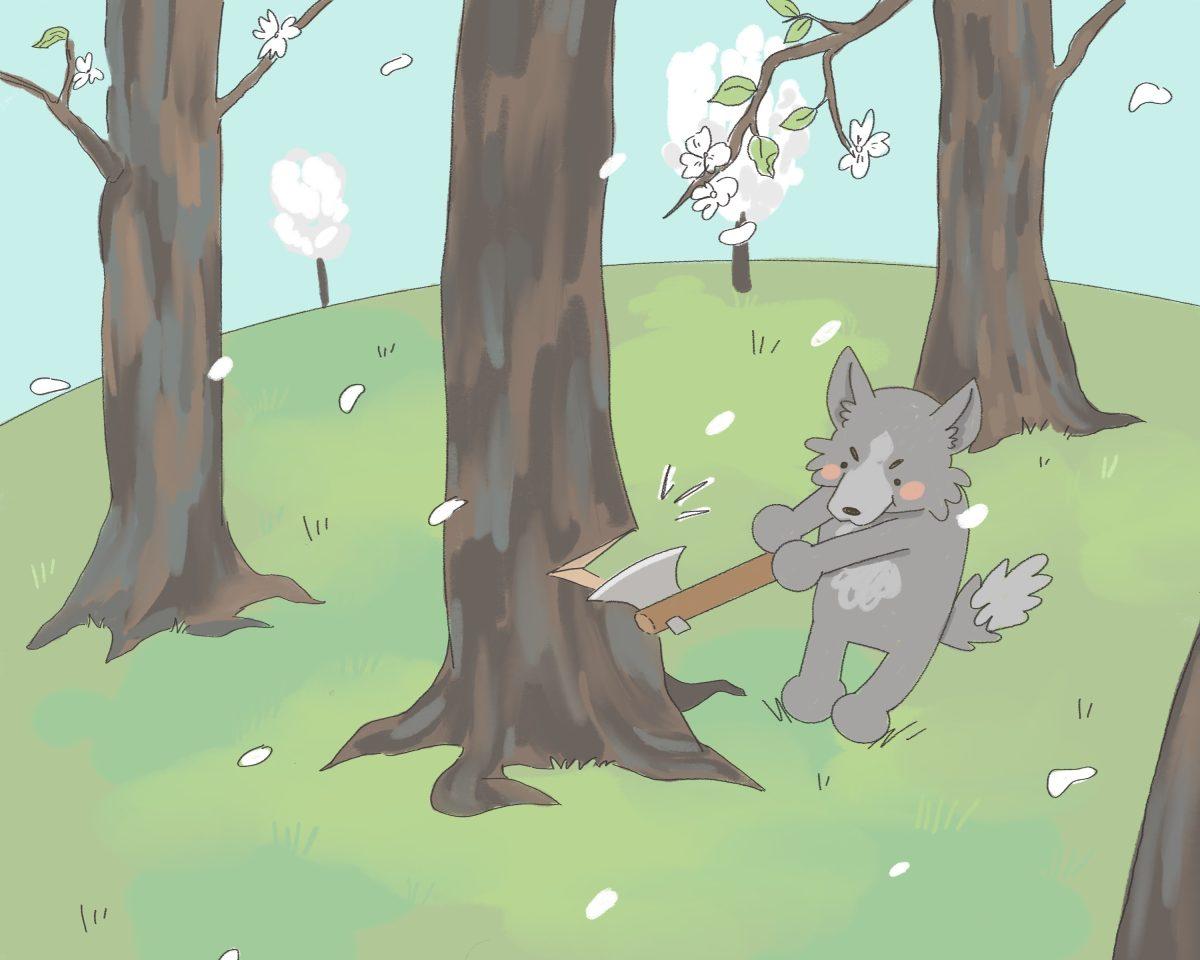Bradford pear trees are some of the first flowering trees in the spring. Walking around campus, one is likely to come across dozens of them, noticeable by their particular, fishy odor. Some horticulture experts advocate for their removal.
Kelly Oten, assistant professor of forestry and environmental resources and extension specialist in forest health, leads the NC Bradford Pear Bounty, an NC State extension program that awards native trees to anyone who cuts down Bradford pears on their property.
Oten said Bradford pears, also known as Callery pears, are invasive and were introduced into the U.S. in the 1960s from Asia for their white blooms and round shape.
“When they first started planting this everywhere, everyone went wild for it,” Oten said. “It’s very beautiful. It is an early spring flowering tree. It does really well in high-stress environments, like urban environments, so it was planted widely.”
Although they are renowned for their beauty, Oten said Bradford pears present multiple issues. She said the branching structure that gives the trees their signature oval shape is structurally weak, causing the trees to break easily during storms.
One of the most prominent characteristics of Bradford pear trees is their smell, which is often compared to rotting fish. Oten said the trees’ odor attracts insect pollinators, such as flies that would be drawn to the smell of rotting meat.
Oten said when Bradford pears were first introduced into the U.S., they were believed to be sterile since they cannot self-pollinate. However, they can cross-pollinate with other varieties of pear trees. In cross-pollination, birds spread their seeds, which then sprout into a form of wild pear tree.
Oten said the wild pear trees grow thorns up to four inches long, which can damage property and wildlife. She said the nature of their blooms is also damaging to wildlife and other plants.
“They’re very dense; they outcompete our native species, likely because they are one of those first spring flowers,” Oten said. “So they come out, they flower, they leaf out and they shade out our native species.”
Barbara Fair, landscape extension specialist and a professor of horticulture, said Bradford pears are so widespread now that she thinks they are unlikely to ever be eradicated anywhere.
Fair said one of the most important issues surrounding Bradford pears is biodiversity. She said cities tend to plant many of the same species of trees at the same time, meaning that they also die out at the same time, either due to age or disease.
“That lack of diversity is a really important thing, especially when you think about the kinds of events that we’re going to continue to have in the future with climate change,” Fair said. “We need to build resilience in our communities, and having a single species take over or be the predominant thing we plant is not helping us build resilience.”
Fair said although Bradford pears present a multitude of issues, they can still fulfill an important use in being able to be planted in disturbed soil and also maintaining the integrity of soil along areas where heavy erosion occurs.
“Those plants along the creek, even along the hillsides, along DOT roadways are holding back soil,” Fair said. “So they are doing a function, they are sequestering carbon, they’re doing all those things that other species do and they are holding back soil, but they’re just not what we would desire. But we’re kind of stuck with them.”
Fair said Bradford pears have become so widespread in the U.S. that educating the public on invasive species to stop stores from selling them is more effective than trying to eradicate them.
“But you have to have an alternative because nurseries are trying to make a living — they need to sell plants to make a living,” Fair said. “So what alternatives can we offer that are native that people will buy? So getting the public interested in that topic is really important.”
Oten said the Bradford Pear Bounty aims to bring these issues into the mainstream.
“It’s supposed to bring awareness to the issue of Bradford pears and the other cultivars of Pyrus calleryana, in hopes that the general public realizes that it’s an invasive species and either removes the trees on their own property, or at the very least, decides to plant something else if they’re looking for something to plant in their yard or on their landscape,” Oten said.
Oten said the Bradford Pear Bounty’s response has been overwhelmingly positive since its launch last spring. As of March 2024, its Facebook page has received 1,177,868 impressions and its website has gathered 157,000 visits.
“The vast majority of people are so supportive, they love this program, they want to see Callery pear out of our landscapes,” Oten said. “So people are just really happy to hear about it. And if anything, I would say one of the biggest feedback we get is ‘When are you coming to my county?’ kind of thing.”
NC Bradford Pear Bounty events will take place in Spindale, North Carolina, April 6 and in Hendersonville, North Carolina, May 4. Visit the NC Bradford Pear Bounty’s website for information on future events.













